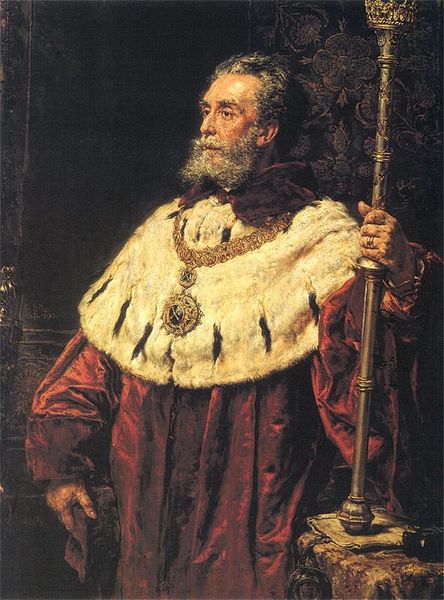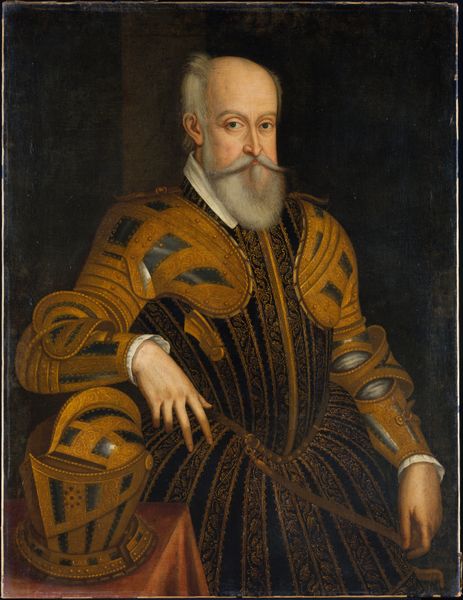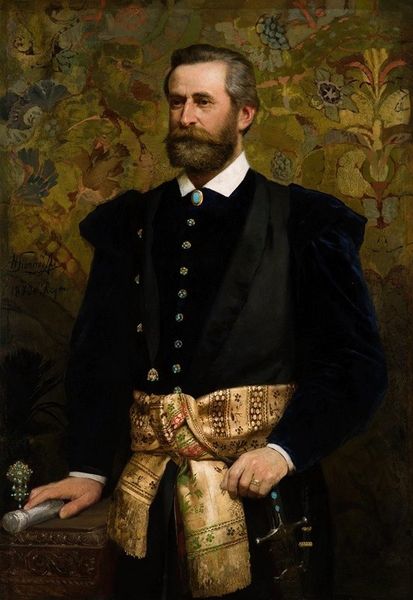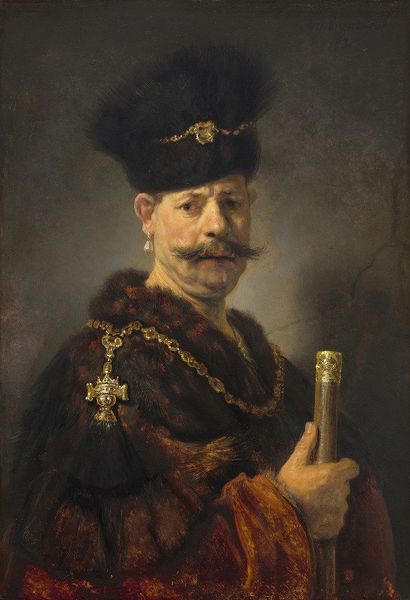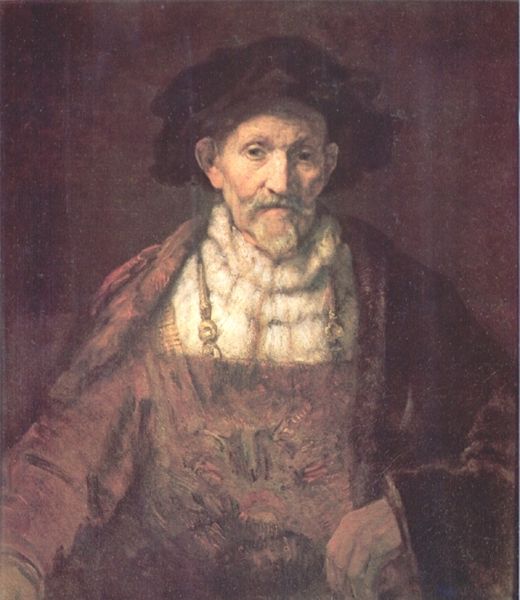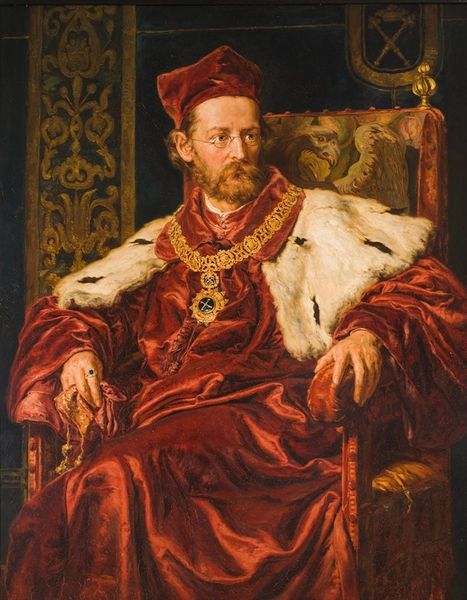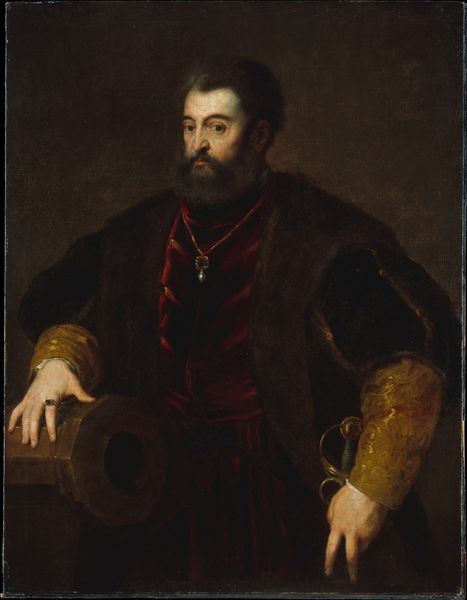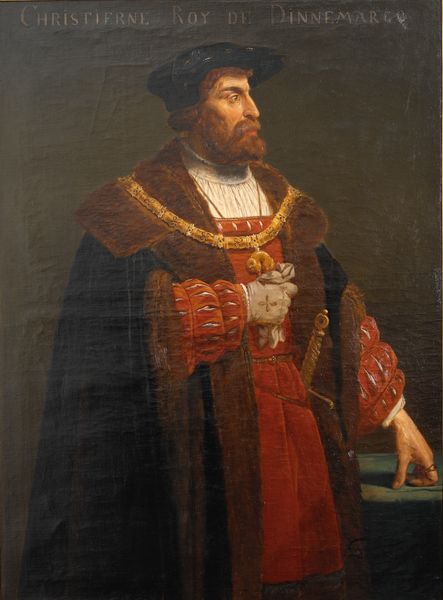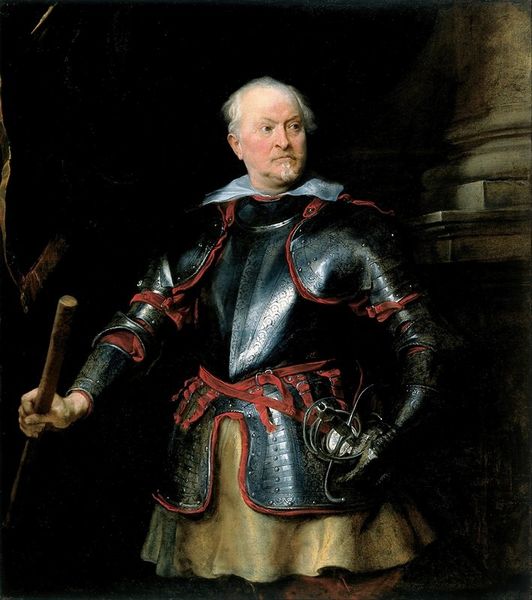
Copyright: Public Domain: Artvee
Curator: This is Jan Matejko's "Portrait of Mikołaj Zyblikiewicz," painted in 1887 using oil on canvas. Editor: He looks every bit the statesman. Dignified, but also weighed down by his responsibilities. The materials in the painting suggest a very privileged position. Curator: Indeed. Notice how the composition directs our gaze. The central placement of Zyblikiewicz, combined with the converging lines of his clothing, particularly the sash and fur hat, create a focal point that commands attention. There's a strategic use of diagonals that subtly injects dynamism into an otherwise static portrait. Editor: And the textures are rich! Look at the rendering of the velvet cloak against the stiff embroidered cloth. I wonder about the artisans who created these items and the value attached to these skilled laborers' work, providing such material splendor to political elites like Zyblikiewicz. Curator: The colour palette is restrained, predominantly composed of earthy tones contrasted with the sumptuous reds of his garments. It's a palette reflective of late 19th-century academic painting but with Matejko’s signature use of symbolic colour—red denoting power and prestige, of course. The backdrop features abstract geometric patterning that recalls historical Polish textiles. Editor: That's a crucial detail to me, the backdrop connects the subject visually to ideas of Polish identity, perhaps commenting on debates on the roles of patriotism in the political landscape of the time. The meticulous crafting of his garments really makes you question who benefits from these historical and political moments depicted in the artwork. Curator: What is particularly captivating is Matejko’s handling of light. The subtle gradations across Zyblikiewicz's face and hands impart a profound sense of realism while accentuating the inherent gravity of his expression. It invites the viewer to consider the sitter's inner life, perhaps the complexities of leadership in his historical context. Editor: So, through process, paint, and pattern, the labor surrounding materials is also put on display alongside Zyblikiewicz, inviting you to consider broader systems of work and exploitation tied to representations of Polish power in art. Curator: A fascinating painting when closely considered. I am left to contemplate Matejko’s skill in combining form and historical narrative to produce such a complex portrait. Editor: Definitely something to reflect on. I am left wondering who exactly got to reap benefits from labor and power structures at this moment in time, too.
Comments
No comments
Be the first to comment and join the conversation on the ultimate creative platform.
